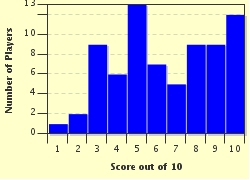Quiz Answer Key and Fun Facts
1. First I take down from my science shelf a book titled "Uncertainty" by David Lindley. It is a history of the development of quantum uncertainty, as embodied in the Heisenberg uncertainty principle. In broad terms, what does this principle state?
2. Next, I take down from my science shelf "The Strangest Man," a biography of Paul Dirac. What is the significance of the Dirac equation?
3. Now I take down from my science shelf "Time Traveler" by Ronald Mallett, a professor of physics at the University of Connecticut, where yours truly earned her M.A. in Medieval Literature. As a student in the College of Liberal Arts and Sciences, I didn't have the opportunity to take a class with Prof. Mallett, but I read his book - part memoir and part Popular Science text - with great interest.
According to Prof. Mallett's research, there are in fact several ways to construct a time machine...in theory, all of them fraught with technical difficulties and design challenges. But, even if we overcome these to build a working time machine, one problem would remain, seriously cramping our style as chrononats. What is that insuperable problem?
4. Here on my science shelf is a book that has been misfiled. "At the Earth's Core" by Edgar Rice Burroughs should be in the science fiction section. It deals with adventures in a world inside our planet, and pretty fantastic, romantic adventures at that. Somehow or other, wherever they are, inside Earth, on Mars or exploring the mountains and caves of the moon, Burroughs' heroes always manage to find beautiful princesses to rescue. Not that I'm complaining. As corny as they are, I enjoy Burroughs' tales quite a lot.
In "At the Earth's Core" the hero, David Innes , finds an entire world, complete with seas and continents, weird animals and exotic vegetation, and eye-popping people all living snugly under our planet's crust. What scientific hypothesis did the endlessly imaginative Mr. Burroughs rely on for his tales of Pellucidar, the world at the center of the Earth?
5. Have I mentioned that I love cosmology? That being so, it was disconcerting to fall asleep while listening to the audio book edition of Michio Kaku's "Parallel Worlds." Once I woke up, though, I was particularly fascinated by chapter seven, which deals with string theory and the related M theory. String theory, with its implication that the universe itself is nothing more nor less than a great musical instrument on which the fundamental particles are played in endlessly varying melodies and harmonies appeals to my aesthetic sense. What claim do proponents of string/M theory make for this theory?
6. "A User's Guide to the Universe" by Jeff Goldberg and Dave Blomquist is rather basic. Still, it includes a few interesting tidbits and helpful explanations. For instance, it says here that a certain theory accurately predicted the ratio of the masses of the W and Z bosons, the carrier particles of the Weak Nuclear Force, with Z being 13% heavier than W. Which shocking theory is this?
7. "The Elegant Universe" by Brian Greene is an introduction to string theory. Here we learn about the five versions of string theory: Type I, Type IIA, Type IIB, Heterotic O and Heterotic E. What did Edward Whiton prove about these seemingly disparate forms of String Theory?
8. Here on my science shelf, beside "The Elegant Universe" I find another book by Brion Green, "The Fabric of the Cosmos." This readable book gives an easy-to-understand yet intellectually satisfying explanation of many puzzles and conundrums we find in the universe. Among them is this statement:
"Special relativity declares a...law for all motion. The combined speed of any object's motion through space and its motion through time is always precisely equal to the speed of light."
What practical, incontrovertible effect does this law have?
9. Did I mention that I enjoy Brion Greene's books? Here's a third, "The Hidden Reality." Here he discusses string theory and the multiverse.
One of the early triumphs of string theory was that the graviton, a postulated spin 2 particle, emerged naturally from the theoretic framework. In "The Hidden Reality," why does Green suggest the graviton may be useful as a tool to probe for other higher dimensional branes (or universes) beyond our own in a brane multiverse?
10. The last book I take down from my Science shelf, "American Prometheus," prompts me to ask a question, not about science, but about a scientist. Why was J. Robert Oppenheimer disgraced?
Source: Author
Catreona
This quiz was reviewed by FunTrivia editor
WesleyCrusher before going online.
Any errors found in FunTrivia content are routinely corrected through our feedback system.

